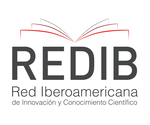Pruebas diagnósticas en alergia y su utilidad clínica.
DOI:
https://doi.org/10.20453/rmh.v15i2.798Abstract
The prevalence of allergic diseases in Peru as well as in the rest of the world is increasing every year, independently of any integral treatment and control measures instituted in the last few years. Consequently, direct and indirect costs in the public or private health systems are highly expensive and generate a global concern related with the search for prevention and early diagnosis, which will permit specific actions that minimize disabling states due to this reason. A detailed clinical history is the key to the proper identification and/or dismissal of the probable allergenic agents that will trigger many of the allergic states, as well as indicating the auxiliary diagnostic tests to be chosen. For the different allergic diseases, various methods exist that can be used to help in diagnosis with proven specificity and sensibility, considering the different allergenic agents. Precise identification of such agents permits the introduction of secondary and tertiary prevention methods, which have as primordial purpose to avoid symptoms and exacerbations, preventing disabling states and improving patient life quality.
Downloads
Downloads
Published
How to Cite
Issue
Section
License
Authors assign their rights to the RMH so that may disseminate the article through the means at their disposal. The journal will provide forms of affidavit of authorship and authorization for the publication of the article, which shall be submitted with the manuscript. Authors retain the right to share, copy, distribute, perform and publicly communicate their article, or part of it, mentioning the original publication in the journal.



















